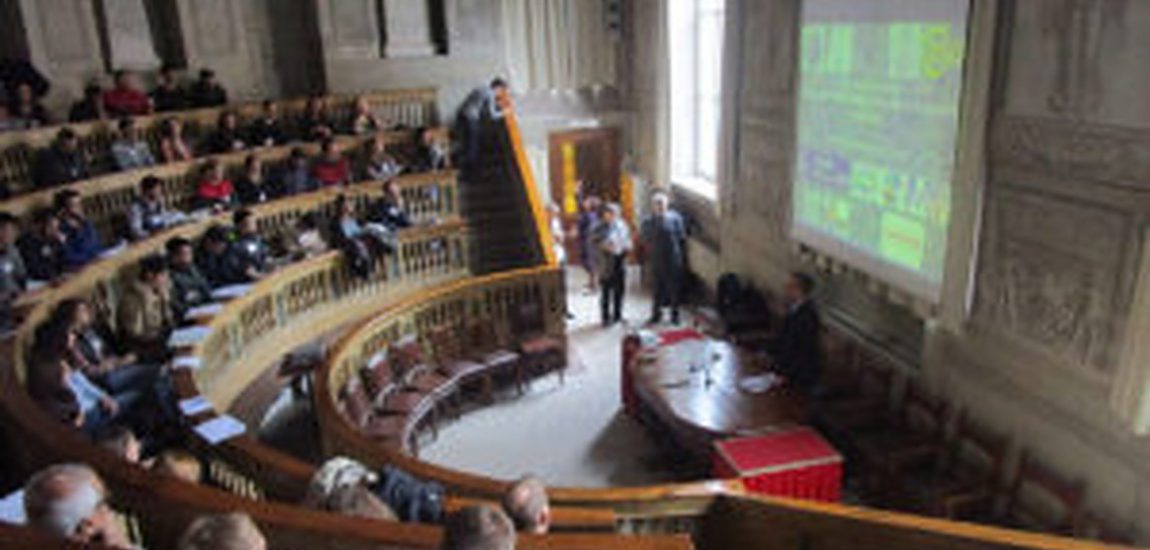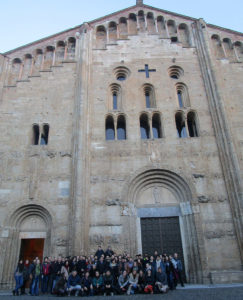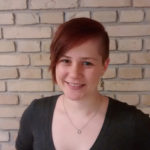
Melting hearts at MEREMA

With the support of the EAG I was able to attend this year’s ‘Melting and fluid/melt-rock reactions in the mantle’ (MEREMA) International Winter School, held at the University of Pavia, Italy. The school was arranged by a lot of different organizations (the Italian Group of Petrography of the Italian Society of Mineralogy and Petrology, as well as the PhD programs of the University of Pavia, Ferrara, Genova, Milano and Modena-Reggio Emilia, and the University of Parma), which was a huge advantage for us students in that the school covered a lot of aspects of the broad field of mantle melting processes. The audience, as well as the invited speakers, represented a wide diversity of international backgrounds.
The first day started with an opening lecture in the historical, and really beautiful, Aula Scarpa, where we got an overview of what was going to happen during the week. The whole week was dominated by great, sunny, warm weather, but after surviving a winter in Denmark, spring in Italy already felt like summer! Fortunately, the lectures were so interesting that it was not too hard to go back into the lecture hall after a nice sunny lunchbreak! On Valentine’s Day, Yan Liang even managed to give a romantic touch to his lecture about modelling grain scale processes of peridotite melting, showing that an angular L-shaped grain can evolve into a heart during melting.
For me, the lectures basically covered the whole background of my PhD studies. They were wide-ranging, covering field studies, geochemistry with natural samples, experimental work and thermodynamics. During the week, I heard the best thermodynamics lecture of my career as a geoscientist, given by Marc Ghiorso (University of Washington, USA), and had the most amazing coffee and food.
In the evenings, we had time to discuss our research with other participants and lecturers during the poster sessions. The organizers gave us a lot of room to discuss in a friendly and relaxed atmosphere, always with coffee and small snacks. In parallel with all the science, we got the chance to enjoy some culture by visiting the San Michele church on a guided tour. Afterwards, we enjoyed the Social Dinner offered by the school, which included a live band. So, the Winter School ended with music, dancing, good food and some drinks. Overall, I can say that the organizers, especially Alessio Sanfilippo and Chiara Trabella, as well as all the organizations who funded the MEREMA winter school, made the week a wonderful experience, keeping a perfect balance between a productive research atmosphere and the Italian way of life with good food and a relaxed mood!
At least for me, I can say that I definitely benefited from the course. Through the open discussions, I got some very interesting input for my PhD project that I can now, being back home, integrate into my research.
About the author
Hannah Bobrowski is about to finish the first year of her PhD in the Earth System Petrology group at the University of Aarhus, Denmark. She is running high pressure experiments on near-fractional melting of the Earth’s mantle. Her supervisors are Charles E. Lesher (Aarhus University, Denmark; University of California, Davis, USA) and Christian Tegner (Aarhus University, Denmark).

